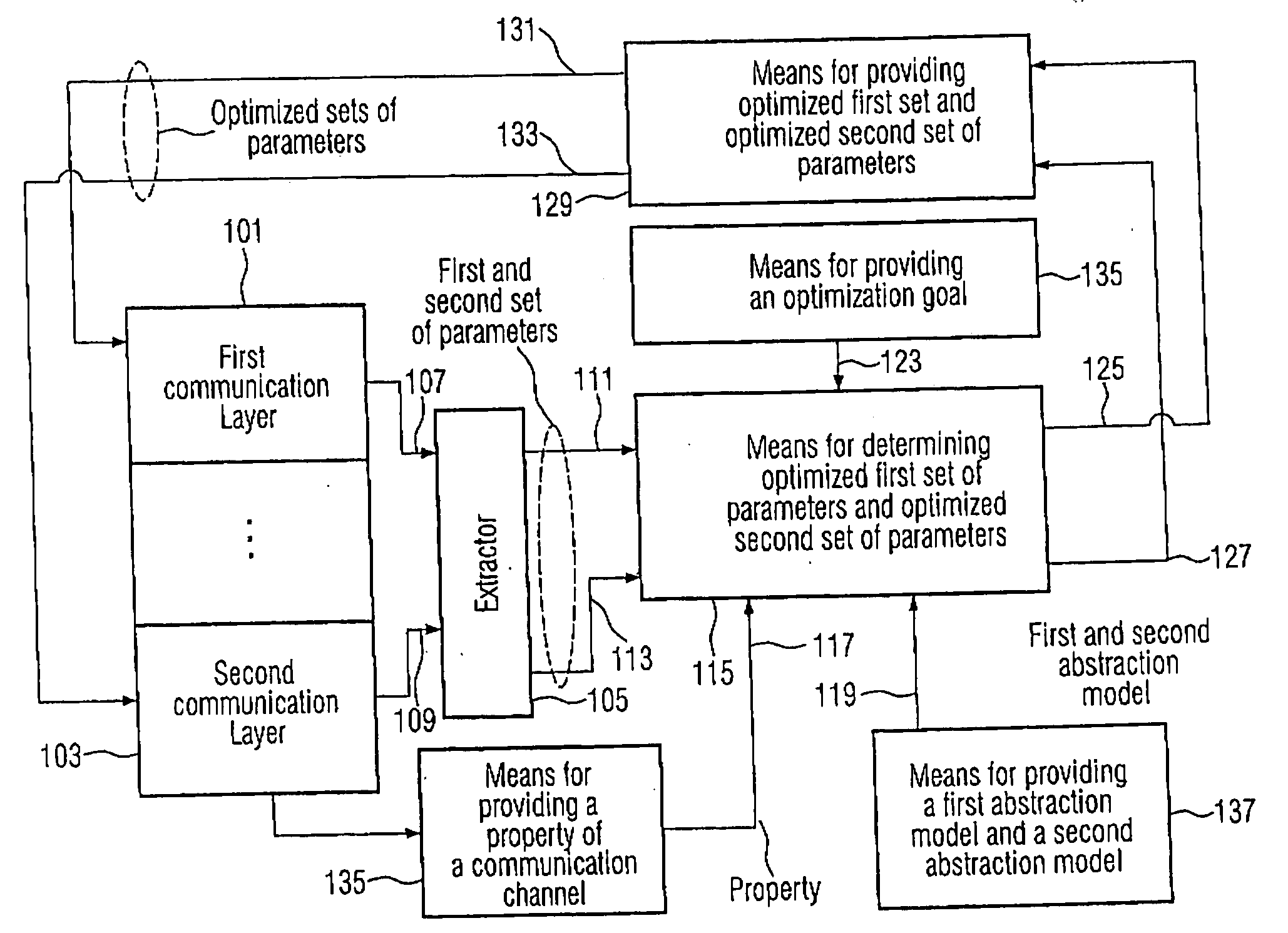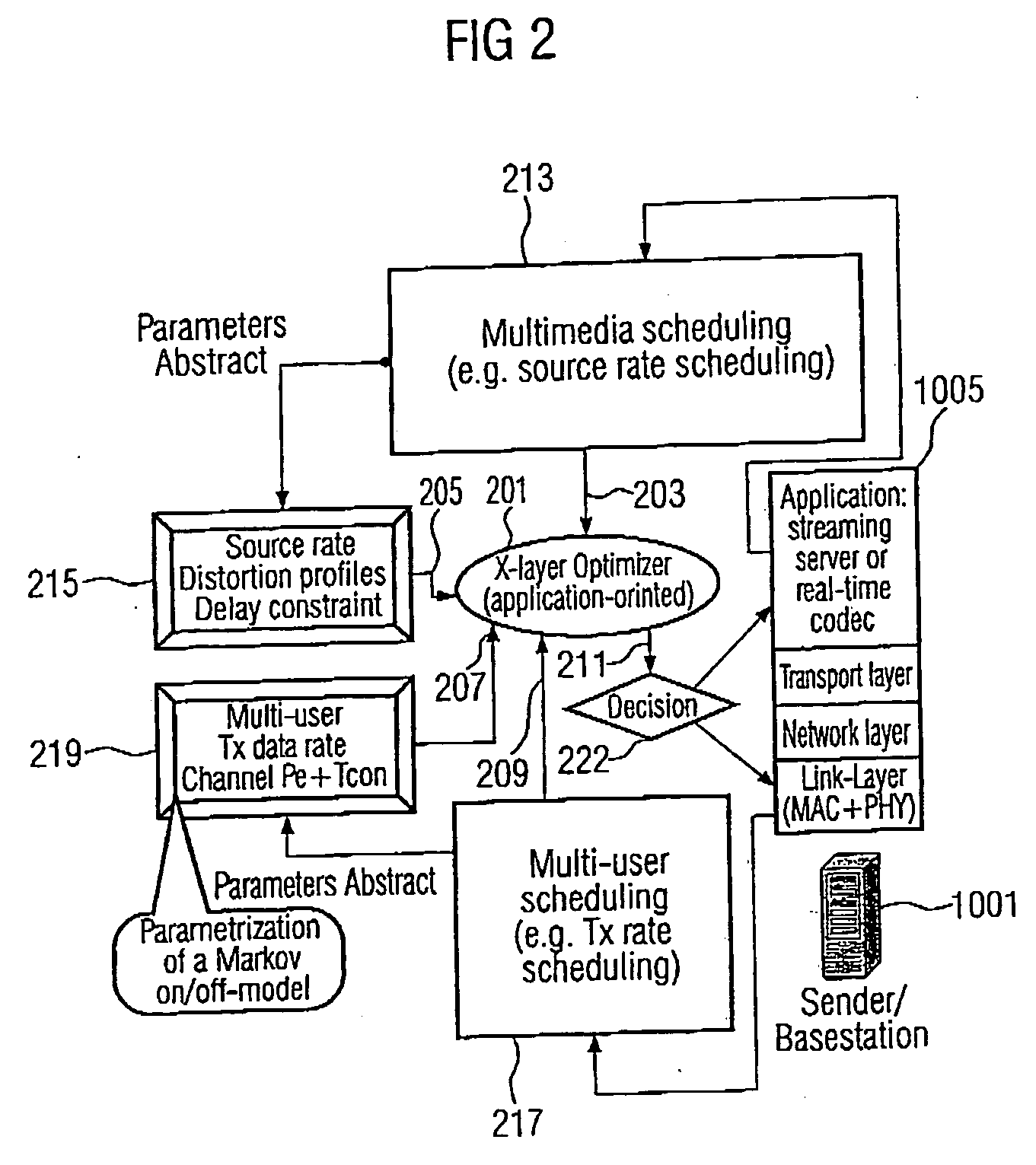Apparatus and method for controlling an operation of a plurality of communication layers in a layered communication scenario
a communication scenario and communication layer technology, applied in the field of communication systems using protocols, can solve the problems of inefficient use of communication resources, dynamic behavior will negatively be affected, and system designers have to cope with non-predictable variation of transmission quality
- Summary
- Abstract
- Description
- Claims
- Application Information
AI Technical Summary
Benefits of technology
Problems solved by technology
Method used
Image
Examples
Embodiment Construction
[0065] In FIG. 1, a protocol stack comprising a first communication layer 101 and a second communication layer 103 is shown. In order to control an operation mode of the first communication layer 101 and the second communication layer 103, the inventive apparatus for controlling the operation of the plurality of communication layers (comprised by the protocol stack) comprises an extractor 105 having a first input 107, a second input 109, a first output 111 and a second output 113. The first communication layer 101 is coupled via the first input 107 to the extractor 105, whereby the second communication layer 103 is coupled via the second input 109 to the extractor 105. The first output 111 and the second output 113 are coupled to a means 115 for determining optimized first set of parameters and optimized second set of parameters. The means 115 for determining further comprises an input 117 and an input 119. Additionally, the means 115 for determining comprises an input 123, a first ...
PUM
 Login to View More
Login to View More Abstract
Description
Claims
Application Information
 Login to View More
Login to View More - R&D
- Intellectual Property
- Life Sciences
- Materials
- Tech Scout
- Unparalleled Data Quality
- Higher Quality Content
- 60% Fewer Hallucinations
Browse by: Latest US Patents, China's latest patents, Technical Efficacy Thesaurus, Application Domain, Technology Topic, Popular Technical Reports.
© 2025 PatSnap. All rights reserved.Legal|Privacy policy|Modern Slavery Act Transparency Statement|Sitemap|About US| Contact US: help@patsnap.com



